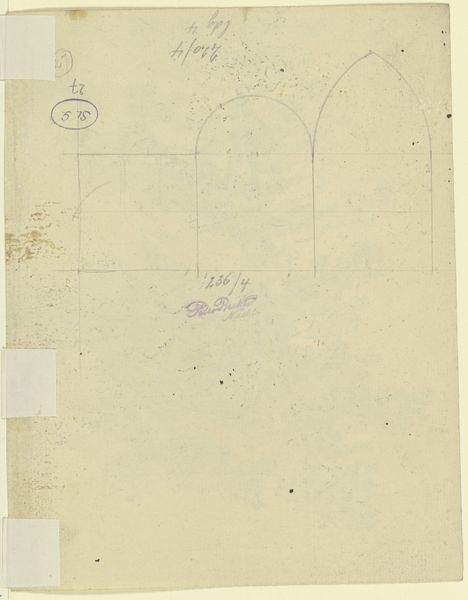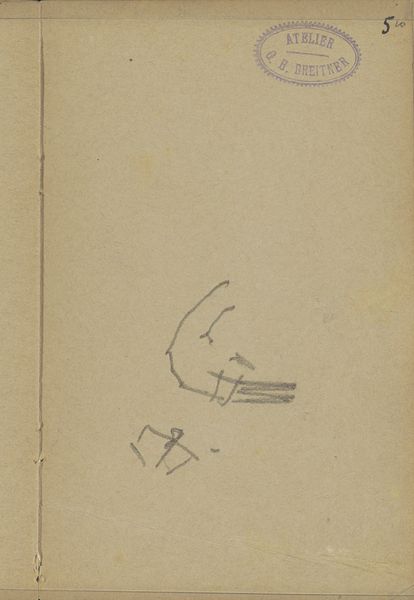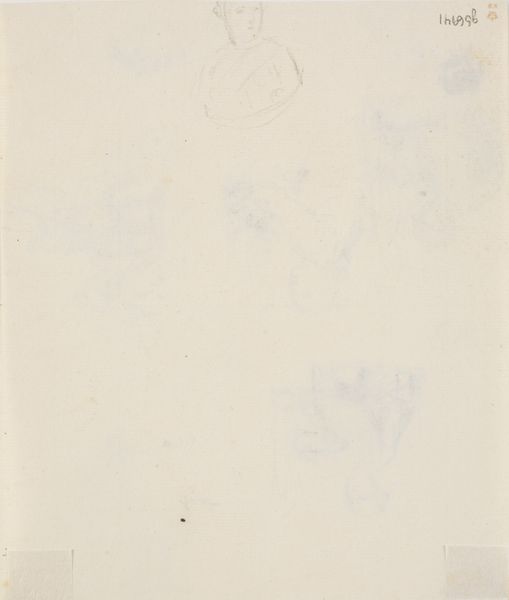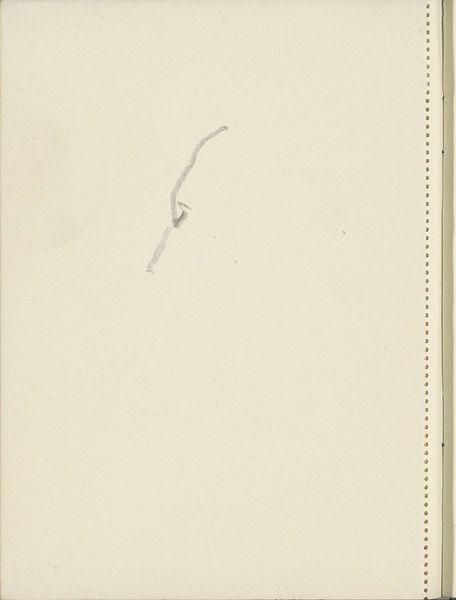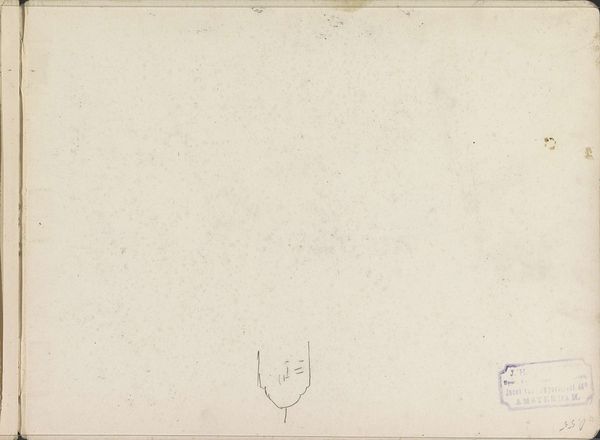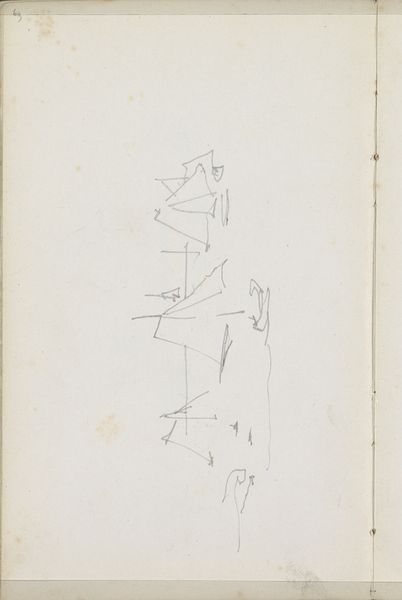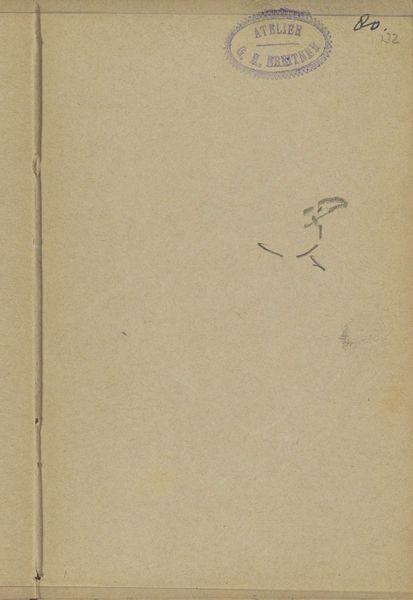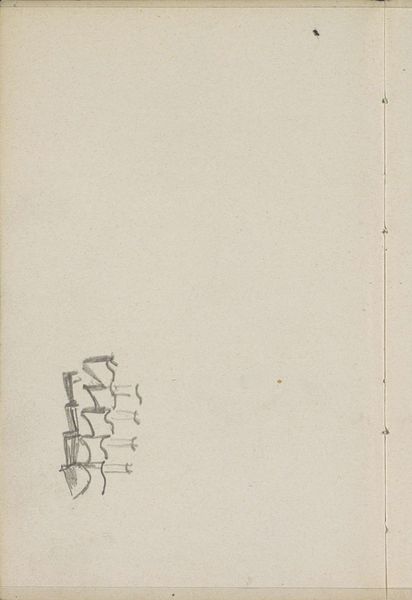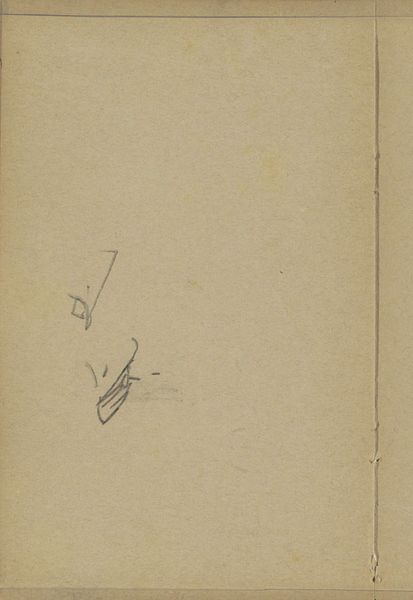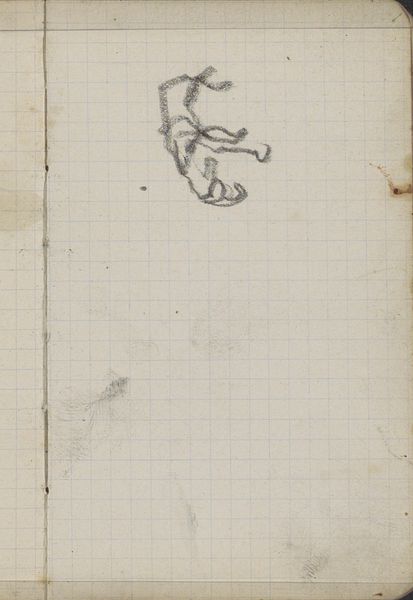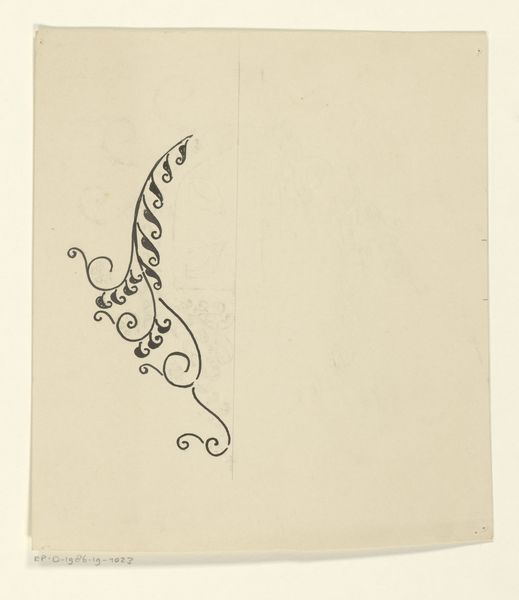
drawing, paper, ink
#
drawing
#
paper
#
ink
#
geometric
#
sketch
#
line
Copyright: Public Domain
Editor: This is an undated drawing from around 1894, simply titled "Unidentified Depiction," by Rudolf Gudden, made with ink on paper and housed in the Städel Museum. It feels incredibly sparse. What do you see in this piece from a formal perspective? Curator: Initially, the composition presents as two distinct zones delineated by contrasting geometric forms. The upper register features a somewhat representational form; while the lower register exhibits a pattern contained within rigid, linear boundaries. How might the relationship between these registers be decoded? Editor: Well, I guess they're both very simple shapes. I can't quite make out what either of them is supposed to represent. They're also very isolated on the page. Curator: Indeed. Note how Gudden utilizes line – its weight, directionality, and economy. The sketch-like quality allows the viewer to concentrate solely on these presented forms, nearly void of all extraneous detail. There is an almost diagrammatic intent evident. Do you perceive an internal logic, a system within this interplay? Editor: I can see how the circular shapes in the second object might be echoing the rounded end in the first. It almost seems like an early study. Is there any evidence that links this drawing to the artist's other known works or studies? Curator: Regrettably, lacking contextual data, one must be content to explore this drawing on its formal merits alone. The very indeterminacy is itself instructive. Does it suggest incompleteness or, instead, an encapsulation of the essential? Editor: I hadn’t thought of it that way, the lack of context forcing a pure focus on form and shape. It's a good reminder to look beyond the obvious. Curator: Precisely. Every element here carries deliberate intention when assessed with the awareness that form dictates the whole and ultimately our experience of the artwork.
Comments
No comments
Be the first to comment and join the conversation on the ultimate creative platform.
